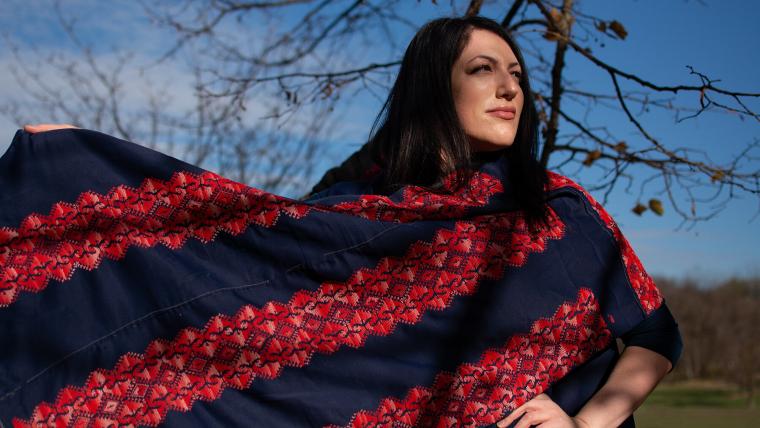
This tatreez artist is stitching unity for the Palestinian diaspora
For Wafa Ghnaim, embroidery isn’t just another pastime. It’s how she keeps her Palestinian identity alive. In 1948, Ghnaim’s mother Feryal fled her village when she was a child due to conflict between Palestine and Israel. Several years later while raising her children in the United States, Feryal felt a responsibility to preserve their roots. She taught Ghnaim and her sisters tatreez, an ancient tradition of cross-stitching. Today, Ghnaim is an artist, teacher, and cultural activist using her creative skill to continue the legacy of her people.
“The history of my ancestry is really woven into the art of tatreez and the art of Palestinian embroidery,” Ghnaim says. From colourful silks intertwined into dresses for everyday use to gold and silver threads worn for weddings and special occasions, there are diverse designs found across the state’s villages. The practice is not only known for its unique blend of colours, patterns, and textures, but also as a statement against political unrest and oppression. When Israeli forces prohibited Palestinian flags in the Gaza Strip and Sinai Peninsula in 1987, women emerged with their embroidery, clothing themselves in garments that represented their homeland.
Ghnaim began Tatreez & Tea to share the history of tatreez in 2015, and later released the book Tatreez & Tea: Embroidery and Storytelling in the Palestinian Diaspora. The platform has since grown, providing embroidery lessons to people around the globe. Ghnaim is further passing down her knowledge as the first Palestinian embroidery instructor at the Smithsonian Museum. While she’s guiding people to learn the art form, she’s also giving them the opportunity to discover the humanity of her people between the threads. “I feel that everything I teach students should empower them to become stronger activists in the movement to liberate Palestinians,” Ghnaim says.
As an artist in residence at the Museum of the Palestinian People in Washington, Ghnaim is safeguarding tatreez across the diaspora. “Sharing my Palestinian heritage with people around the world allows me to give voice to aspects of the Palestinian people that were otherwise not shared,” Ghnaim says.
Footage and photos by Carlos Khalil Guzman, Alicia J. Rose Photography, Nadia Gilbert, Andrea Leake, Oregon Folklife Network, and Wafa Ghnaim were used in the creation of this film.






























Please sign in to leave a comment